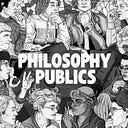Search for the Real and Other Essays by Hans Hofmann (Exegesis)
Extended space versus the interval of negative space in art and representation.
Hans Hofmann, artist and philosopher, developed and wrote about how to create volume and depth on a two dimensional plane through the push and pull between colors and forms.
Hofmann theorizes the difference between the representation of volume and depth through the pictorial use of lines — such as with receding horizons — and the activation of depth and volume that emerges as a relationship between elements on a two dimensional canvas.
The difference between the representation of three dimensionality on two dimensions (where these two orientations towards what is seen are in tension), and the activation of three dimensions within upon flat surface, that is the magical at work in visual art.
In philosophical terms, what he theorizes is a visual correalte to the possibility of the infinite embedded in the finite, or the structure of existence. Think of it like the facing off of two mirrors, only it is no surface effect. The depth created is real, it opens up a new dimension of depth.
Underlying these ( the represntation and the activation of depth) are two competing notions of space — what Aristotle named the extended envelope or place (Hofmann and other artists call it positive space) and the interval that emerges as the negative space between things. Extended space becomes the basis for modern conceptions of space/place; it is the basis both for Cartesian res extensa and the matrix model assumed by the natural sciences. But the interval is something else, something best understood by artists and architects.
Georgia O’Keeffe, an American modernist artist known for her paintings of enlarged flowers, New York skyscrapers, and New Mexico landscapes, said as much: if you want to paint the rose, you paint the spaces in between. I couldn’t find the actual quote, and I remember Maurice Merleau-Ponty (French Philosopher of the 20th Century) saying something similar. In any case, the interval and space in-between has long been a fascinating subject. It is an idea that goes as far back as Plato’s khora in the Timeaus. Plato’s Timaeus is the first philosophical account of what we may now call “space,” and there, space is described as an active receptivity, an entity in-between being and non-being that helps things come into and pass out of existence. This idea of space is by far the most archaic of spaces, going back to pre-Greek, Orphic cults.
Could it be that there have been two different and separate things that we call space? Are these two competing and antagonistic, or do they act in concert? Or, another possibility again, does the one act as the support for the other? Is interval-space the support for space and place as envelope, as occupation? If so, then maybe it is not a matter of two separate and distinct spaces, but of two modes of one same phenomena.
In this book Hofmann beautifully sets out to explore the representation of active and negative space as a creative force in art in a way that plafully intersects with philosophy. A really enjoyable read.
